Understanding the File Structure of Your Computer -
Receiving and saving a file sent via email attachment using Outlook Express
A word of warning. Never open an email attachment (especially one ending in .exe) if you do not know and trust the person sending it to you! Doing so can cause unmeasurable harm to your computer.
As a saftey precaution, no matter who it is from, I save an attachment in the manner shown in this tutorial, and then, scan it with my Norton Anti Virus software.
OK, so your friend sends you an email and has attached a file to it that you would like to save. You will want to be able to find that file after you have saved it.
For the first part of this tutorial we will assume that the file sent to you is a photo that you will want to be able to find again to look at and perhaps print out.
Your incoming mail will show a paper clip on the left side of the message as in this example

Double click on the message to open it. This is what it will look like when you open the message
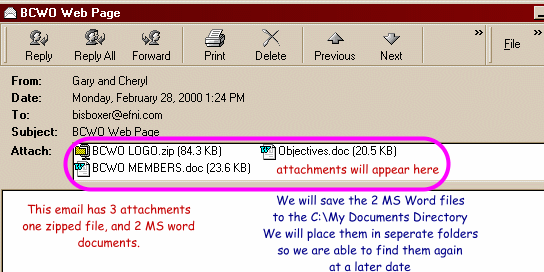
Now you will highlight one of the attachments, and right click on it.
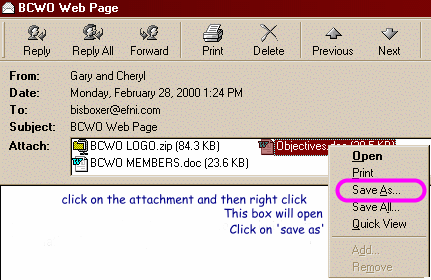
Then click on save as. When you do that you will get a pop up box that looks something like the one below. It may not be exactly the same, because at this point your computer will take you to where you last were. The file directory name in the 'save in' box (outlined in red) may be different on your machine than on mine.
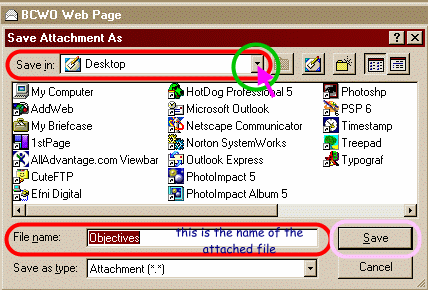
Click on the small black arrow in the green circle with the arrow pointing to it. You will get a drop down menu as in this example below.
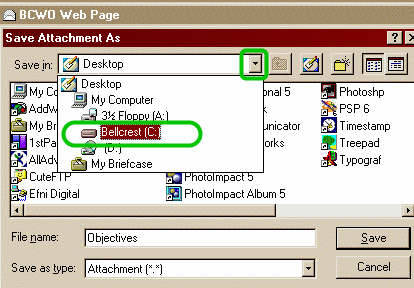
This is what you will see after clicking on the arrow. Now click on the [C:] drive. Once you are at the [C:] drive you will see all the directories that are on the [C:] drive just as in example 5 in the Understanding the File structure of your Computer Tutorial You will navigate to the My Documents directory.
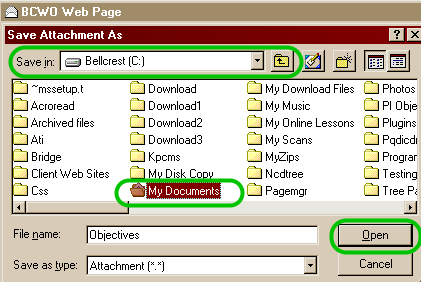
Now that you are there, highlight the My Documents Directory. You may either double click on My Documents or click on open. This will open the My Documents directory showing you all the files that are in that directory.
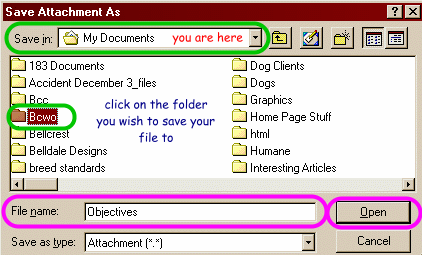
Click on the file you wish to open and click on open. This will open that folder. You may have made sub folders in this folder to store your documents in a more organised manner as shown in the example below. If you have not made sub folders and want to place you file directly in this folder, now is the time to hit save.
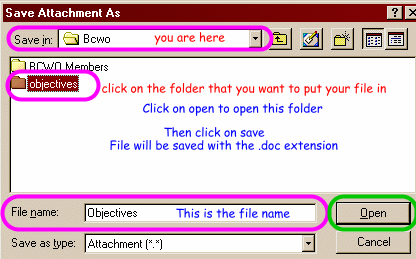
To learn how to make sub folders within folders, check out the Understanding the File structure of your Computer Tutorial You will be able to save any attachment that you receive via email in this manner. You will have to learn the file structure of your hard drive [C:] so that your will be able to find the files again. In the example shown, we have saved a MSword file attached to an email message. You may save a photo/picture file in the same way. You may have a special folder on your hard drive called, Photos that you keep all your pictures in. Perhaps you have sub folders in that folder so you can keep your pictures organised.
If you have questions or suggestions on how to improve this tutorial, please contact me.
Memberships | FAQ'S | Tips & Tricks | Home |